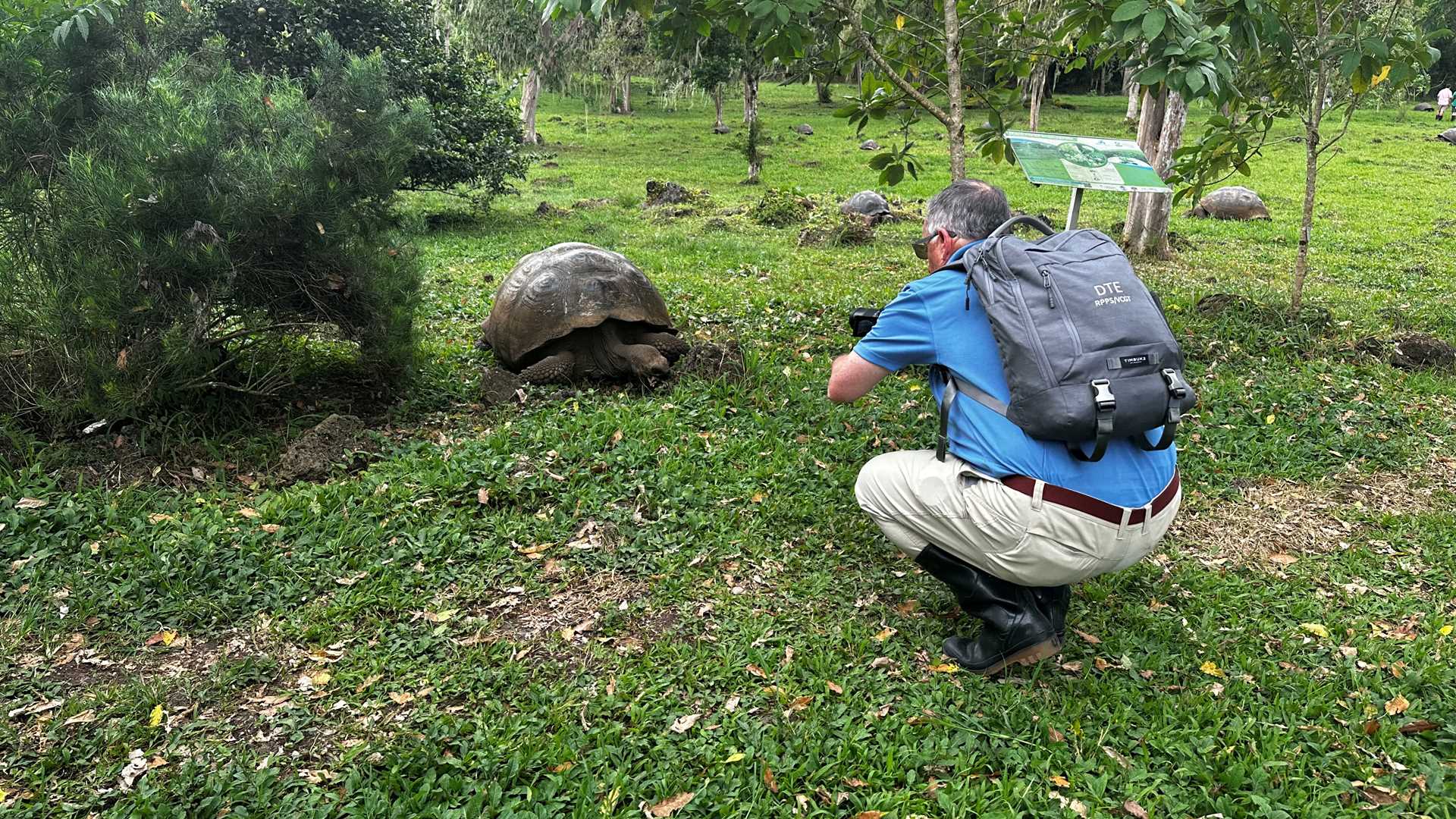One of the four inhabited islands in the Galapagos, Santa Cruz is a very diverse place. Here, nature and people have learned to live in harmony and equilibrium for many years. As a big island with an altitude of 2,800 feet, Santa Cruz has the greatest diversity of flora and fauna in the archipelago. Since colonization of the island first began, Ecuadorians and others have occupied the highlands for agriculture and cattle farming, two of the most important activities in the lives of the Galapagueños.
We visited the giant tortoise Breeding Center, a decades-long and vitally important project run by the Galapagos National Park administration. Our guests learned about the life cycle, behaviors, and struggles of the Galapagos tortoises. In addition, we learned about the different conservation efforts run by the Charles Darwin Foundation and the Galapagos National Park as we walked around these sites.
Next on our agenda was a visit to the highlands of Santa Cruz; here we experienced part of the human side of the archipelago. Our guests learned how people live in such a special place, how they manage to have a good ecological balance with nature, and how to use natural resources in a sustainable way.
For the next part of this eventful day we had an extraordinary experience for our guests — we got to walk amongst the iconic giant tortoises of the Galapagos Islands in their natural habitat. Santa Cruz Island has the second largest species of tortoise in the archipelago, and we saw with our own eyes how great these giant reptiles are. We observed the way they walk, eat, and take mud baths in the ponds. We were so eager to see these slow-moving giants, and they added even more to this already special day.







